| |||||
| Decades: | |||||
|---|---|---|---|---|---|
| See also: | |||||
| |||||
| Decades: | |||||
|---|---|---|---|---|---|
| See also: | |||||
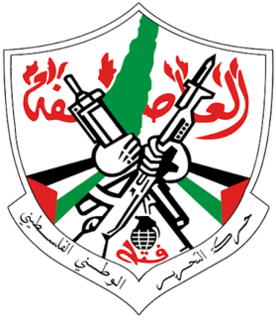
Fatah, formerly the Palestinian National Liberation Movement, is a Palestinian nationalist social democratic political party and the largest faction of the confederated multi-party Palestine Liberation Organization (PLO) and second-largest party in the Palestinian Legislative Council (PLC). Mahmoud Abbas, the President of the Palestinian Authority, is a member of Fatah.
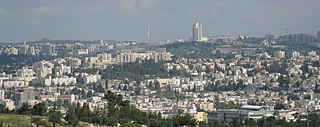
Jerusalem is a city in Western Asia, on a plateau in the Judaean Mountains between the Mediterranean and the Dead Sea. It is one of the oldest cities in the world, and is considered holy to the three major Abrahamic religions—Judaism, Christianity, and Islam. Both Israelis and Palestinians claim Jerusalem as their capital, as Israel maintains its primary governmental institutions there and the State of Palestine ultimately foresees it as its seat of power. Neither claim, however, is widely recognized internationally.

Amman is the capital and largest city of Jordan, and the country's economic, political, and cultural center. With a population of 4,536,500, Amman is the largest city in the Levant region, and the fifth-largest city in the Arab world.

Petra, originally known to its inhabitants as Raqmu or Raqēmō is a historic and archaeological city in southern Jordan. It is adjacent to the mountain of Jabal Al-Madbah, in a basin surrounded by mountains forming the eastern flank of the Arabah valley running from the Dead Sea to the Gulf of Aqaba. The area around Petra has been inhabited from as early as 7000 BC, and the Nabataeans might have settled in what would become the capital city of their kingdom as early as the 4th century BC. Archaeological work has only discovered evidence of Nabataean presence dating back to the second century BC, by which time Petra had become their capital. The Nabataeans were nomadic Arabs who invested in Petra's proximity to the incense trade routes by establishing it as a major regional trading hub.

Jerash is a city in northern Jordan. The city is the administrative center of the Jerash Governorate, and has a population of 50,745 as of 2015. It is located 48 kilometres (30 mi) north of the capital city Amman.
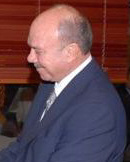
Faisal al-Fayez is a Jordanian politician who was the Prime Minister of Jordan from 25 October 2004 to 6 March 2005. He took office following the resignation of Ali Abu al-Ragheb. He resigned after being criticized for not being reformist enough. He previously served as Defence Minister and is close to the king. He was educated at the College De La Salle, Amman, Jordan (1970) and then went on to Cardiff University, United Kingdom, where he received a degree in political science in 1978. In 1981, he has a master's degree in international relations from Boston University.
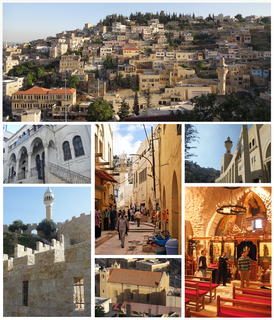
Al-Salt is an ancient agricultural city and administrative centre in west-central Jordan. It is on the old main highway leading from Amman to Jerusalem. Situated in the Balqa highland, about 790–1,100 metres above sea level, the city is built in the crook of three hills, close to the Jordan Valley. One of the three hills, Jabal al-Qal'a, is the site of a 13th-century ruined fortress. It is the capital of Balqa Governorate.
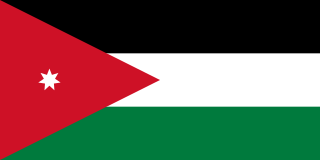
Jordan, officially the Hashemite Kingdom of Jordan, is a country in Western Asia. It is situated at the crossroads of Asia, Africa and Europe, within the Levant region, on the East Bank of the Jordan River. Jordan is bordered by Saudi Arabia to the south and east, Iraq to the northeast, Syria to the north, and Israel, West Bank of Palestine, and the Dead Sea to the west. In the southwest, it has a 26 km (16 mi) coastline on the Gulf of Aqaba in the Red Sea. The Gulf of Aqaba separates Jordan from Egypt. Amman is Jordan's capital and largest city, as well as its economic, political, and cultural centre.

Jordanian art has a very ancient history. Some of the earliest figurines, found at Aïn Ghazal, near Amman, have been dated to the Neolithic period. A distinct Jordanian aesthetic in art and architecture emerged as part of a broader Islamic art tradition which flourished from the 7th-century. Traditional art and craft is vested in material culture including mosaics, ceramics, weaving, silver work, music, glass-blowing and calligraphy. The rise of colonialism in North Africa and the Middle East, led to a dilution of traditional aesthetics. In the early 20th-century, following the creation of the independent nation of Jordan, a contemporary Jordanian art movement emerged and began to search for a distinctly Jordanian art aesthetic that combined both tradition and contemporary art forms.

The Children's Museum Jordan is a children's museum in Amman, Jordan. It is located in Al Hussein Public Parks.
Events from the year 1965 in Kuwait.
Events from the year 1959 in Jordan.
Events from the year 1956 in Jordan.
Events from the year 1954 in Jordan.
Events from the year 1999 in Jordan.
Events from the year 1998 in Jordan.
Events from the year 1993 in Jordan.
Events from the year 1976 in Jordan.
Events from the year 1971 in Jordan.
Events from the year 1970 in Jordan.